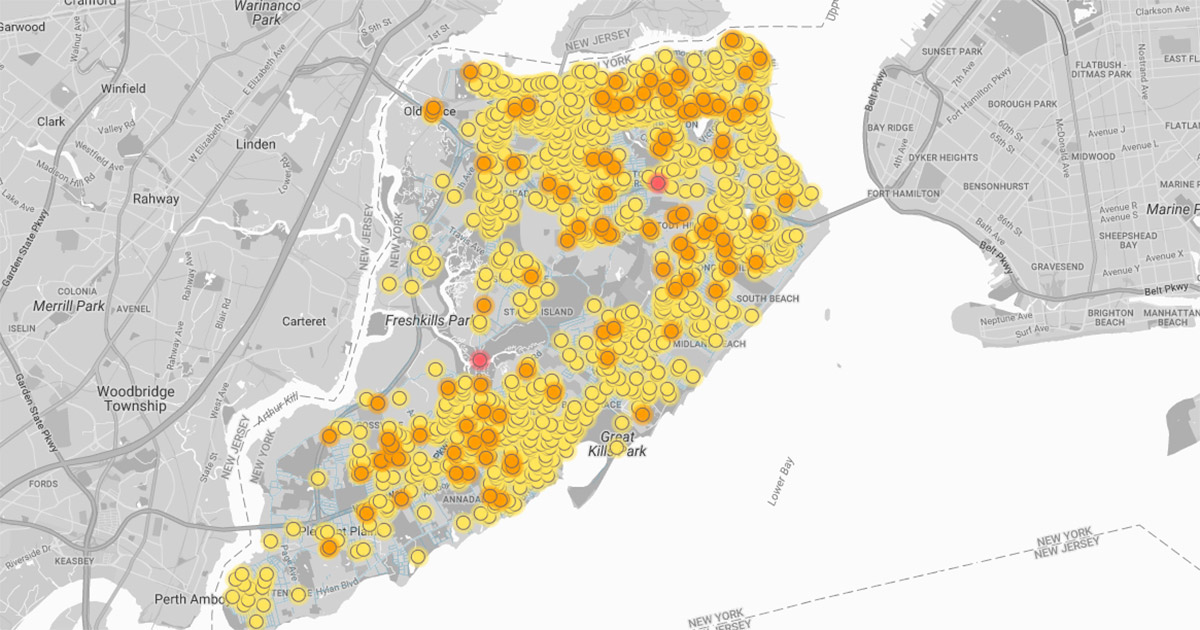Colorado State University research that uses Google Street View cars to map natural gas methane leaks is helping the nation’s largest metropolitan area prioritize tens of millions of dollars in infrastructure upgrades.
New York’s Consolidated Edison (Con Ed), a major electric and natural gas utility, is experimenting with advanced leak detection technology for the pipelines that supply natural gas to thousands of homes and businesses. Deployment of new laser-based, real-time methane detection technology was pioneered at Colorado State University in the lab of Joseph von Fischer, professor in the Department of Biology, and colleagues at CSU. Von Fischer leads a CSU team that’s continuing to refine the technology and its applications. The project is a partnership with Environmental Defense Fund and Google Earth Outreach.
“We’ve been working on the refinement of our methane-sensing technology for many years now,” von Fisher said. “Seeing how our work is being implemented and making a difference for utilities that serve millions of citizens is a great testament to the research partnership we’ve had with EDF and Google Earth Outreach.”
Supplying data to fix leaks
The methane-mapping project has supplied Con Ed with data that will help it prioritize the many millions of dollars it spends annually to repair and replace aging natural gas lines under the streets of New York City and Westchester County. That data was generated using Google Street View mapping cars and interpreted using data analytics developed by von Fischer’s team.
“Eliminating leaks from older pipes is a challenge for gas utilities everywhere. This technology helps focus efforts where they deliver the biggest benefits by reducing wasted gas and lowering methane emissions,” said Jonathan Peress, EDF senior director of energy market policy. “Reducing methane emissions is one of the quickest ways we have to protect the climate. That’s why we’re glad to see Con Ed embrace solutions like this one.”
According to EDF and Con Ed officials, persistent leaks represent both a waste of customer resources and needless impact on the environment, because methane – the main element in natural gas – is a potent greenhouse gas. In recent years, rapidly repairing large leaks and replacing leak-prone supply pipes has become increasingly important for utilities and regulators nationwide.
The project uses cutting-edge spatial analytics combined with methane sensors fitted to Google Street View mapping cars to map and measure leaks hidden beneath local streets quickly and efficiently. Project post doc Zach Weller, now a CSU assistant professor in statistics, calculated that Con Ed was able to reduce nearly twice the estimated volume of methane escaping from areas surveyed in a recent pilot project, compared with a business-as-usual approach.
Non-hazardous leaks
Like many utilities, Con Ed is focused on eliminating a backlog of leaks on its gas system. Companies are required by law to fix dangerous leaks quickly, but leaks classified as non-hazardous can often persist for years. In fact, researchers estimate there are over a million of these non-hazardous leaks nationwide, adding up to a significant environmental problem.
The new approach makes it much easier to identify which non-hazardous leaks are releasing the most gas, and to prioritize those for immediate repair.
EDF, Google and CSU have been developing advanced leak detection technology for six years, first in open-air laboratories, then by surveying and mapping leaks in the field. They are working with utilities in a dozen U.S. cities to spotlight the methane issue and show how it can be addressed cost effectively. Nationwide, utilities are increasingly using new advanced leak detection technologies to prioritize repair programs, and EDF expects to see the trend grow as commercial vendors continue to enter the market.
For its part, Con Ed publishes an online map of all reported leaks on their system, both hazardous and non-hazardous, updated every 24 hours. The company urges customers to report any possible leaks they encounter, even if they’re already on the map.

